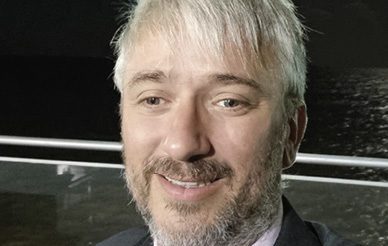Innovation key to Argentina’s largest PV plant

Argentinian state-owned power company Jemse built the country’s largest PV facility between 2017 and 2020 under the RenovAr program for large-scale renewables. Thus far, the 300 MW project has produced more than one million MWh of clean electricity and is now on the verge of being expanded to 500 MW, with the addition of 30 MW/100 MWh of storage. pv magazine recently spoke with Willy Hoerth, the president of Jemse’s Cauchari Solari unit, and its project director, Guillermo Giralt. The 300 MW asset was financed with funds from Export-Import Bank of China, and a $210 million bond issued by the Argentinian province of Jujuy. Jemse has full ownership of the project. Huawei was the supplier of the string inverters in the first phase and likely for the second phase.
pv magazine: The Cauchari solar plant is Argentina’s largest PV facility. The project is currently being expanded from 300 MW to 500 MW. How is work moving forward?
Hoerth: The provincial government is currently reviewing the power purchase agreement (PPA) for the sale of power to the Electricity Wholesale Market Administrator, the Compañía Administradora del Mercado Mayorista Eléctrico (CAMMESA). The final resolution should be issued over the next weeks and the PPA should then be signed. We will have a time frame for the construction of the plan of between 500 and 600 days starting from the financial closing. Compared to the Cauchari I, II, and III projects, which totaled 300 MW, the Cauchari IV and V plants will have several technological innovations, including storage.
Giralt: The Cauchari IV and V facility will have a capacity of 100 MW each and will include storage systems totaling 30 MW/100 MWh. This is going to help CAMMESA stabilize its grid. Furthermore, the solar plant will use bifacial modules with higher power output, compared to Cauchari I, II, and III. It will occupy less surface for the same capacity as the first project.
Huawei has provided its inverters for the first phase of the project. Will it also be the supplier for the second phase?
Giralt: String inverters from Huawei have been used for the project. There were many technical and logistical reasons why we have chosen inverters of this type. Fundamentally, the plant is located at 4,200 meters above sea level and is three and a half hours from San Salvador de Jujuy, which is the closest city. The only route to reach the plant is badly accessible and the maintenance of central inverters for 300 MW of solar would require between six and eight people, who would have to be there every day. Central inverters are very sophisticated artifacts that can only be handled by very specialized people and professionals of this type are not going to live in towns like the one where the Cauchari project is being carried out. So, the idea was to have inverters that can allow maintenance operations with people with low training and, in eight minutes two people can change a string inverter. In the first phase, we used inverters with a power of 50 kW and in the second phase, we will use 215 kW devices. On the other hand, the power of the inverters in the market has followed the trend we have seen for modules. In Cauchari I, II, and III we used modules with a power of 330 W, and now we are planning to use panels with power ranging from 540 W to 570 W.
Technical challenges for power systems
This year, Huawei’s special edition looks at technical challenges to a power system mostly run by inverter-interfaced power sources. The leading topic: Smart PV and Storage – Anytime for Anyone, is achieved by a high degree of digitization, a new business division within the Huawei corporation and strong network of partners.
What advantages will be brought by this level of innovation?
Giralt: Well, as I said, we will need less surface, structure, and cables for the second part of the project, which means the facility will have less electric losses and a higher power yield. As a result, the levelized cost of the energy of Cauchari IV and V is between 20% and 25% lower than that of the Cauchari I, II, and III projects. The PPA, however, also includes the contribution made by the batteries, for which we plan to invest around $20 million.
The first phase of the project represented an important milestone in Argentina’s energy landscape. Could you provide some details about this 300 MW facility?
Giralt: The 300 MW of the installation is generated by PERC polycrystalline panels provided by China’s Talesun. The project location has irradiation of between 1,000 W/m and 1,200 W/m with temperatures close to zero degrees. Such conditions increase the performance and efficiency of solar modules. The project was selected by the Argentinean government in the first round of the RenovAr program for large-scale renewables. This section of the plant is selling electricity to the CAMMESA at a price of $60 per MWh under a 20-year PPA, for the second plant, we will have different conditions, as we will also integrate batteries. The plant was built at an altitude of more than 4,000 meters, where there is less oxygen. That could lead to de-rating problems and all the electronic parts of Huawei inverters are sealed and the power module has convection cooling. These are inverters that are very well prepared to maintain low temperatures in the power section, without the need for fans. Thus, even though the solar park is at 4,000 meters of altitude, the inverters do not have a de-rating problem and spend less energy cooling, which means an improved performance by 3% and that means a lot more financial gains.
